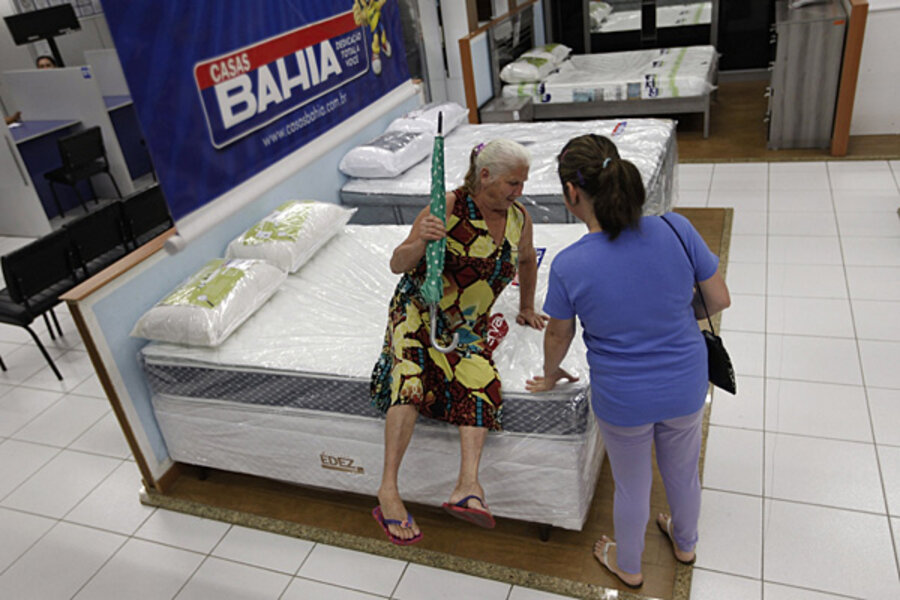Should you spring for a memory foam mattress? Pros and cons.
There is nothing quite like a good night's rest. Unfortunately this level of beauty sleep often comes with a price. Although Tempur-Pedic mattresses have a reputation for being among the priciest solutions to a good night's sleep, over 7 million people have made that choice and are resting easy, content with their memory foam beds. But before you consider this expense, here's the lowdown on Tempur-Pedic reviews, materials, prices, and user satisfaction.
Know Your Memory Foam Mattress
Unlike conventional innerspring mattresses, Tempur-Pedic mattresses are made of memory foam. This foam is derived from visco-elastic polyurethane that promises to provide support to sleepers' heads, shoulders, hips, knees, and feet while keeping spines in proper alignment. Resting in a comfortable position all night long promotes sound sleep, and ensures that people wake rested and without aches and pain.
However, it's hard to draw precise price comparisons between Tempur-Pedics and other mattresses on the market. For one, innerspring mattress vendors make different mattresses for different stores, so it's hard to choose just one to compare. Secondly, not all memory foam is the same. Some manufacturers measure mattresses by indentation load deflection units (ILD): the higher the number, the denser the foam. Tempur-Pedic products usually clock in at 14-15 ILD. The Signature Sleep Memoir 8" Memory Foam Mattress in Full ($199 with free shipping, a low by $100) has a 9 ILD.
Unfortunately, this density measurement isn't usually noted in advertising. Tempur-Pedic competitors such as the Novaform Serafina Gel Queen Memory Foam Mattress ($979.49 with free shipping, a low by $1) may not be dense enough to provide proper support, especially for the above-average sized American. However, more dense memory foam does not necessarily result in greater customer satisfaction: around 80% of memory foam bed users are satisfied with their product, whether sleeping on a high-end mattress like Tempur-Pedic or a cheaper knockoff.
Consumers should also be aware that a memory foam mattress isn't all memory foam. Usually, there are at least two layers: the top or comfort layer is memory foam. Beneath that there's a support layer that typically has some spring to it. For example, some 12" mattresses may have only 2" of memory foam.
A Mattress That Costs the Same as Your Daily Coffee for 10 Years
A general rule of thumb is: the more memory foam, the more money. The top-of-the-line Tempur Grandbed Queen mattress sells for $7,499, while the more reasonably priced line of Tempur-Weightless Supreme in Queen runs $2,399; others cost less. The company also offers a new, affordable line of mattresses to compete with models from vendors such as Ikea and Costco; the Tempur-Simplicity Queen costs $1,099. Yes, these mattresses are pricey, but if we assume an average life of 10 years, the Weightless Supreme only costs $0.65 a night — less than the cost of a morning paper and way less than a wake-up latte.
Memory Foam Pros and Cons
However all is not perfect with memory foam mattresses. The most common consumer complaint is heat retention: 10% to 14% of respondents reported that their memory foam beds retained an uncomfortable amount of body heat. Only 3% to 4% of those who slept on inner-spring mattresses complained of such an issue. As a result, the industry has begun tackling this problem by innovating. Tempur-Pedic competitors such as Serta have incorporated support gel to help mattresses breathe better. Yet Tempur-Pedic has not added gel to its mattresses.
Speaking of heat, a number of Tempur-Pedic users found their mattress to be more firm than expected upon first use, though the foam softened and became comfortable as it absorbed body heat. Remember this when test-driving such a mattress. And even once you've found a comfortable mattress, pay heed to its weight. Foam mattresses tend to be heavier than their inner-spring counterparts, meaning they're harder to flip and rotate, though sagging seems to be less of a concern for memory foam owners. While Tempur-Pedic beds do tend to soften with age, only 8% to 12% of users report premature sagging.
Besides not sagging, another advantage to memory foam beds is how quiet they are: they don't creak and whine every time a sleeper rolls on his side. They also tend to isolate motion, so a wave action initiated on one side doesn't flip the other sleeper out of bed.
Tempur-Pedic Offers Fantastic Warranties
When it comes to warranties, Tempur-Pedic leads the market. The company offers 25 years of coverage, with the last 15 pro-rated. It also offers a 90-day trial period on beds bought directly from the company, though it excludes ancillary products like bed frames, cushions, and pillows, and the customer is responsible for return shipping. In fact, buyers can truly rest assured that Tempur-Pedic will be around to live up to its warranty.
Are Tempur-Pedic Mattresses the Best Memory Foam Mattress?
Given that customer satisfaction is fairly evenly distributed among memory foam sleepers regardless of brand, it's hard to substantiate the claim that Tempur-Pedic provides a better night's sleep than some of its less expensive competitors. However, those who own a Tempur-Pedic mattress tend to be very loyal to the brand.
In light of price point, it seems reasonable to suggest testing out a less expensive memory foam mattress from Ikea or Costco to start. Both offer more affordable memory foam beds. From there, check out the new offerings from Serta. And if a Tempur-Pedic is a must-have, it's smart to give the less expensive Simplicity line a try first.
This feature has been updated since it was originally published last year.
Tom Barlow is a contributing editor to dealnews.com, where this article first appeared.
Original post: http://dealnews.com/features/Bed-Decisions-The-Pros-and-Cons-of-a-Tempur-Pedic-or-Memory-Foam-Mattress/629071.html






